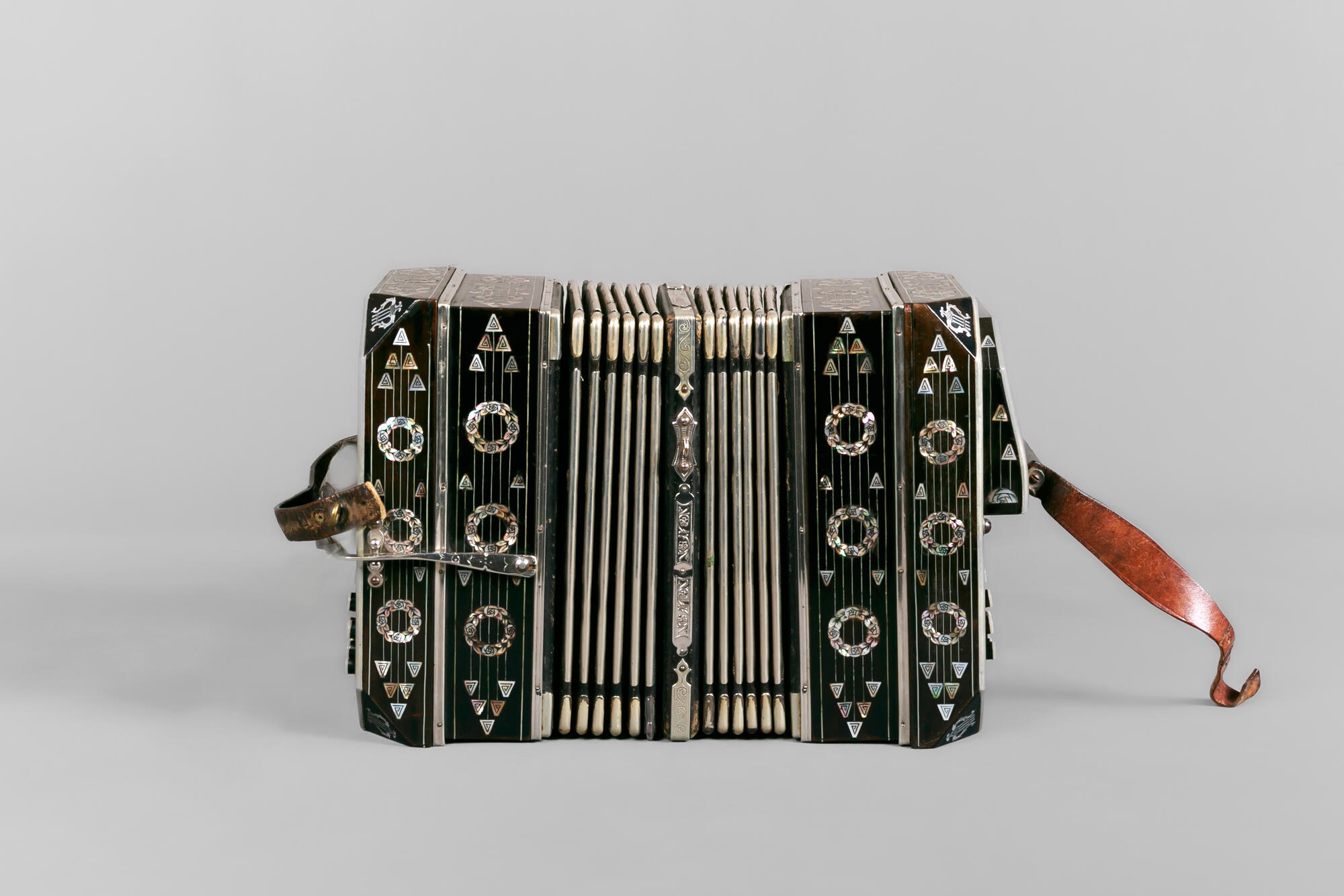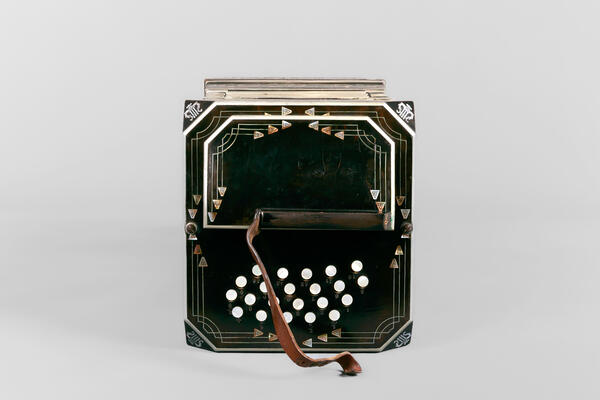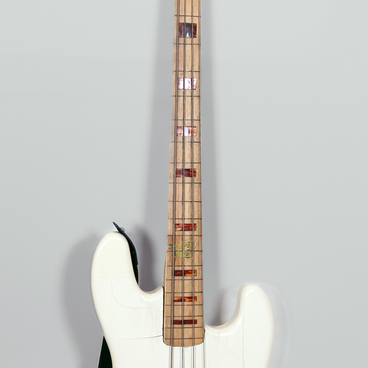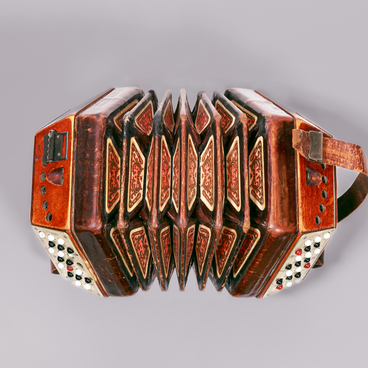The bandoneon is a bellow-driven free reed aerophone instrument with a keyboard. This instrument belongs to the family of squeezeboxes. Its design is similar to that of bayans, harmonicas, and accordions.
The bandoneon was created based on the design of the German concertina by Heinrich Band from the German town of Krefeld in the 1840s. The master gave this instrument a square shape. The sound of the bandoneon changes depending on whether the bellows are pulled apart or pushed together. Therefore, each button can produce two different notes.
Early bandoneons had up to 28 buttons, or 56 possible notes. Later, the number of buttons was increased to the standard of 72 buttons, or 144 notes. Musicians use four fingers on each hand to play the buttons. The right-hand thumb rests on the air valve lever, to provide additional air to the bellows.
The bandoneon from the museum’s collection has 50 buttons. The right-hand keyboard has 28 buttons of the higher-pitched notes, while the left-hand keyboard has 22 buttons of the bass notes. The instrument’s body is encrusted with mother of pearl that forms geometric and floral patterns and is decorated with the images of lyres on the chamfered corners.
Initially, the bandoneon was used to substitute organ in Lutheran and Protestant churches in Germany. Later, musicians started using this instrument at home, in bands and ensembles.
In the late 19th century, bandoneons were brought to Argentina where they at once became popular. They also attracted musicians from Uruguay and Brazil. Nowadays, bandoneon is considered to be the national instrument of Argentina. It was adopted by tango ensembles and became very popular due to its melancholic sound.
Astor Piazzolla, an Argentine composer of the second half of the 20th century, wrote numerous bandoneon compositions. His music contributed greatly to the genre of tango by incorporating elements of jazz and classical music. Known in his native land as “The Great Astor, ” Piazzolla invented a new style known as “tango nuevo, ” or “the new tango.”
In 1986, Piazzolla was awarded the César Award for Best Music with the film score for musical drama “Tangos, the Exile of Gardel.” One of the roles in the movie was performed by Marina Vlady, the widow of the Soviet singer Vladimir Vysotsky.
The bandoneon was created based on the design of the German concertina by Heinrich Band from the German town of Krefeld in the 1840s. The master gave this instrument a square shape. The sound of the bandoneon changes depending on whether the bellows are pulled apart or pushed together. Therefore, each button can produce two different notes.
Early bandoneons had up to 28 buttons, or 56 possible notes. Later, the number of buttons was increased to the standard of 72 buttons, or 144 notes. Musicians use four fingers on each hand to play the buttons. The right-hand thumb rests on the air valve lever, to provide additional air to the bellows.
The bandoneon from the museum’s collection has 50 buttons. The right-hand keyboard has 28 buttons of the higher-pitched notes, while the left-hand keyboard has 22 buttons of the bass notes. The instrument’s body is encrusted with mother of pearl that forms geometric and floral patterns and is decorated with the images of lyres on the chamfered corners.
Initially, the bandoneon was used to substitute organ in Lutheran and Protestant churches in Germany. Later, musicians started using this instrument at home, in bands and ensembles.
In the late 19th century, bandoneons were brought to Argentina where they at once became popular. They also attracted musicians from Uruguay and Brazil. Nowadays, bandoneon is considered to be the national instrument of Argentina. It was adopted by tango ensembles and became very popular due to its melancholic sound.
Astor Piazzolla, an Argentine composer of the second half of the 20th century, wrote numerous bandoneon compositions. His music contributed greatly to the genre of tango by incorporating elements of jazz and classical music. Known in his native land as “The Great Astor, ” Piazzolla invented a new style known as “tango nuevo, ” or “the new tango.”
In 1986, Piazzolla was awarded the César Award for Best Music with the film score for musical drama “Tangos, the Exile of Gardel.” One of the roles in the movie was performed by Marina Vlady, the widow of the Soviet singer Vladimir Vysotsky.





